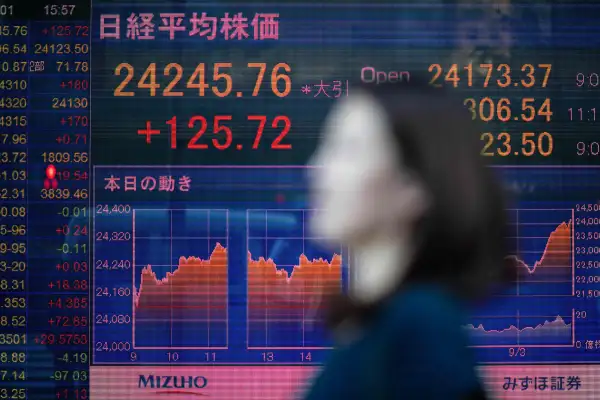The World's Second Biggest Stock Market Has Disappointed Investors For Years. Here's Why That Could Finally Change
Money is not a client of any investment adviser featured on this page. The information provided on this page is for educational purposes only and is not intended as investment advice. Money does not offer advisory services.

Japan's slow growth has disappointed U.S. investors for a generation. But with U.S. stocks looking pricey after nine years of nearly uninterrupted gains, some investors argue the world's second largest stock market looks like a bargain.
Japan's problems are no secret. Among the biggest: An aging workforce, high levels of public debt and persistent deflation. But modest Japanese stock prices arguably already reflect those, meaning there's plenty of upside.
While the U.S. stocks rose roughly four-fold in the past decade since the 2008 financial crisis, Japanese stocks have lagged far behind, roughly doubling in U.S. dollar-terms. As a result, while the Standard and Poor's 500 is trading at about 23 times its components' annual profits, Japanese stocks trade at a much more modest 14 times.
With recent improvements in Japan's economy, that hefty discount may no longer make sense, according to analysts like Morgan Stanley. The "pessimistic consensus is looking in the rearview mirror," a strategist at the brokerage wrote in a note in September, while recommending new investments in Japanese stocks in several sectors, including consumer electronics and financial technology.
Economic Stats Are Looking Up
While Japanese economic growth is notoriously sluggish, Morgan Stanley argues it could soon accelerate. One reason is new gains in productivity, some associated with a move to a "cashless society." Another is a recent expansion of the labor force, with Japan's notoriously listless labor markets feeling their first major influx of immigrant labor -- a sign of what strategists say is a significant change in the economic and business culture.
For stock investors, perhaps the most important outcome of this cultural shift is a new emphasis on "return on equity," essentially a businesses' profitability. Japanese corporations had long lagged developed-market rivals in this measure of efficient use of capital, but that's slowly starting to change. Return-on-equity for Japanese stocks increased from less than 5% before business-friendly Prime Minister Shinzo Abe won the 2012 election to almost 10% in the summer of 2018.
Fool Me Once
Of course, there have been many false dawns in the land of the rising sun. The last came when Abe was elected on a promise to fight deflation with an all-out campaign of fiscal and monetary stimulus. "Abenomics" was born and American money flowed into the Japanese stock market for the first time in 20 years.
At first, it appeared that Mr. Abe's policies had slain the deflation dragon that had tyrannized Japan’s economy since a stock bubble burst in the late 1980s. When deflationary readings resurfaced in 2016, the Nikkei 225 index, which had almost doubled since Abe’s election, fell by roughly 25%. U.S. investors fled and have not yet returned.
Abenomics Worked...Slowly
Abenomics, as it turned out, was less of an economic revolution and more of a series of incremental improvements.
“I think what [investors] expected in the initial couple years after 2013 was quick change.” said Taizo Ishida, a portfolio manager at mutual-fund firm Matthews Asia, and a longtime Japan investor. “There’s a lot of change going on, but the change has been pretty slow.”
Patience has been rewarded. The Nikkei 225 rose 10% in the last six months -- even as foreign investors withdrew money. The broad index is roughly 50% above its 2016 lows, after accounting for this week's plunge.
Mr. Ishida, who was born in Japan and visits frequently to assess investments, said he has seen profound changes in the society. He meets more and more young CEOs, more young people willing to change jobs regularly and more foreign laborers.
“When you look back over the last four years, you think ‘My goodness! Many things changed.”